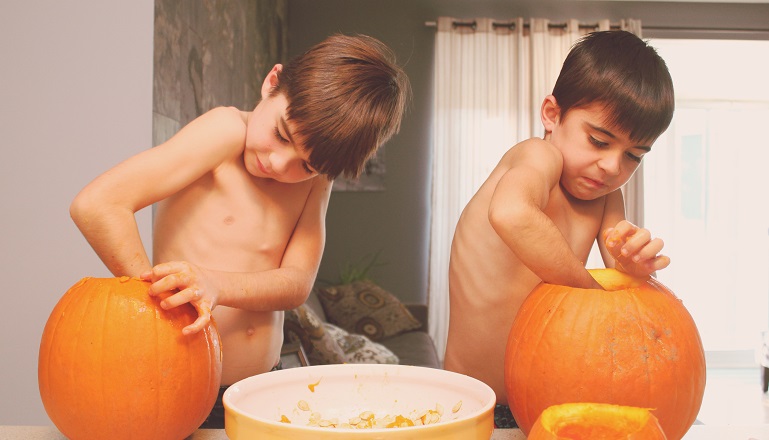I met my husband while I was in college and he was in the midst of making a life-defining decision. Our acquaintance turned to friendship and, with the passage of time, our friendship deepened and we married. When I reflect on what pulled us together, it was the deep conversations we shared, conversations that pushed past the everyday noise of life and allowed us to open up about our values-about family, relationships, and children. My husband had fathered a child in a prior relationship, and he was in turmoil trying to think through how best to respect and support his child and the birth mom. He also considered her family’s wishes and her new partner’s wanting to adopt and exclusively parent the child. I watched as he wrestled with making the very best, child-centered decision possible. My husband’s unwavering focus on his child dominated his thinking, and because of this, he won my respect and my heart.
The Road to Parenthood
The next phase of our life seemed to fly by in a blur-building homes, careers, traveling, and visiting family and friends. Whenever we talked about starting a family, our conversation would naturally wind its way to adoption. We embarked on what we refer to as our “research phase”—we visited with adoptive families, attended workshops, and read countless books, discussion boards, and essays on adoption issues: family preservation vs. adoption, domestic vs. international, closed vs. open, infant vs. older child. We made career decisions so that we could relocate to my husband’s rural hometown where we’d have a strong support system of family and friends.
After we adjusted to our relocation and new roles, we contacted a private adoption professional and started our home study—with a preference for an open, domestic adoption of older siblings. When the home study was complete, we were referred to Children and Family Services and started the matching process. The agency weighed a number of variables in making the match, and I believe that our preference for an open adoption was among the issues considered. Several children’s profiles were shared with us, but something clicked when we learned about two biological brothers, then ages four and six, whose birth mom had executed a consent order so that they could have a new family.
A New Way of Living
We traveled to meet the boys and their foster family, and I’ll never forget the look on their faces when they opened the door with the greeting, “We know you are our new mommy and daddy!” The younger one pulled us aside to say that he had a few questions for us. We replied that questions were great because that is how people get to know each other. He then asked me the toughest question I have ever faced, “How do you know that you will be a better mommy than my other mommies? And how do I know your answer is true?” We answered his questions without undermining his birth and foster parents, and this set the tone of our relationship. From the beginning we have encouraged our sons to preserve their ties to their birth and foster families. Since there are risks in communicating directly with their birth family, Children and Family Services acts as an intermediary. But we visit and communicate directly with their foster family. These efforts help our sons build and sustain important adoption relationships. They have already experienced too much loss and grief in their young lives.
Our belief, fueled by other families and adoption workers, is that preserving these adoption relationships will help our sons throughout their lives, and that the denial of these relationships would deepen the hurt. We even envisioned a day when the boys would want to see their biological siblings and birth mom, and we try to prepare for that day with on-going communication.
We actively look for opportunities to connect with our sons’ birth and foster families, and seize those opportunities that occur naturally. The boys enjoy saving favorite photographs, schoolwork, and crafts for their other families. Our family-tree projects include all members of our sons’ families—birth, foster and adoptive. Yet there is no direct or implied pressure for the boys to participate in these initiatives. We have tried to avoid a pre-determined schedule of communication to prevent disappointment. Quite naturally, children expect that people with whom they feel a connectedness will remember important dates in their lives. We have often struggled to explain that not receiving a letter or card on a birthday or holiday does not mean that their special someone is not thinking about them. And we try to allay their worse fear—that something terrible has happened to them. We believe that by acknowledging all of our sons’ feelings, not just those we may want to hear about, has helped them with these stressful adjustments.
I am not saying that this is easy. It is hard to “let in” daily reminders that you can’t fill the gap left by a lost loved one. It is hard to forgive someone who has mistreated your child in the past. And it is hard to hear your little one say that he wants to send this school craft to his foster mom, but you can have the next one! But I would much rather experience a little difficulty to let our sons have an opportunity to integrate everyone into their definition of family.
Last Mother’s Day our eldest boy, then seven, gave me his card with the observation that, “All of the kids at school made cards that say their mommy is the best, and that is okay…it’s what they think. But they don’t really know—they don’t have any comparisons. I have had four mommies, and I know you are best because you let me remember everyone and you take really good care of me.”



